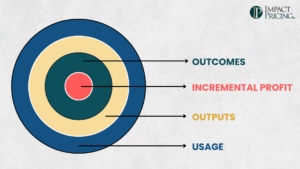Growing a traditional business isn’t easy, but it is easy to understand. You invest more in marketing and sales to generate more qualified leads and turn them into paying customers. Of course, you need the right products and a good reputation, but growth comes from winning new customers.
Service as a Software (SaaS) is different. Sure you want to win new customers, just like in a traditional business. However, that’s only one piece of your growth. The other piece comes from growing the amount your current customers pay you. In subscription business, this is monitored with a KPI called Net Dollar Retention (NDR).
Growing Your Subscription Business Through Net Dollar Retention
Subscription businesses need to focus on three different revenue buckets:
- Acquisition
- Retention
- Expansion
Acquisition is winning new customers, and Net Dollar Retention is the sum of retention and expansion.
The NDR KPI comes from creating a cohort of subscribers. Typically this cohort is all of the subscribers you had in December last year. How much revenue did you get from those subscribers in December? Multiply that by 12 months and that’s how much revenue you would get from your existing subscribers if none of them stopped paying you and if none of them chose to buy more from you. Of course, that doesn’t happen.
Some of these customers will churn. Ouch. Minimizing churn is the same thing as managing the retention revenue bucket. Most SaaS companies create on-boarding and customer success teams to make sure subscribers get value from their products since customers who get value are much less likely to leave.
Reducing churn is crucial to growth, because every dollar that churns is a dollar you have to replace before you can start growing.
Managing the Expansion Bucket
Some of the customers in this cohort will pay you more. This is the expansion revenue bucket. To be sure, nobody voluntarily pays you more. You have to make the right business decisions in order to grow your customers. You must be intentional. Many companies use the phrase “land and expand” — but if you don’t focus on and invest in the expand part, it won’t happen.
Expansion is possibly the most important part of growing your SaaS business, however it’s most often overlooked. If you want to build a fast-growing SaaS business you need to invest in expansion (as well as acquisition).
In their S-1 filing to go public, Zoom claimed 140% NDR. This means if you look at the cohort of subscribers in December of the previous year, those subscribers paid 140% more the following year. Sure, some people unsubscribed. They likely shifted to a competitor or just stopped using video conferencing. Those were lost sales. That means they grew the amount they were paid by the subscribers who stayed with them by more than 40%. Wow!
There are four ways to increase how much a subscriber pays you:
1. Increase prices
Three things often happen as SaaS companies become more successful. Users (and the company itself) become more aware of the true value of the product offering. The company adds more capability to the product, and companies become better at targeting specific market segments. All of these increase subscribers Willingness to Pay (WTP) and provide the company with the opportunity to increase prices. Increasing prices carefully can be a critical component of your expansion. Increasing prices poorly can lead to higher churn rates.
2. Usage Growth
As a SaaS business, you get to specify a pricing metric. What do you charge for? When you do this well, you get paid more as your subscriber uses more. In B2B, the number of users is a common pricing metric. Both Slack and Salesforce use the number of users as their main pricing metric. However, it is very likely that you can capture more value by using a pricing metric other than users.
Examples of Pricing Metrics
- Storage
- Transactions
- Clicks
- Emails
- Interactions
- Number of presentation
The great news is if you get your pricing metric right, your revenue per subscriber automatically grows as each customer grows.
3. Upsell
As your product matures, you will create many new features. The most effective subscription companies combine features into packages. Typically these are good, better, best packages with some additional features offered as options. Upsell is when a subscriber starts off buying the good package and later upgrades to the better or best package. That user has decided they want more capability and they are willing to pay more for it.
It’s not easy, but getting the right features in the right packages with the right pricing encourages both trial for winning new customers and upsell opportunities for growing existing customers.
4. Cross-Sell
As your company matures you will likely come up with new products. For example, take a look at all of the different products that Salesforce now offers. Typically these products are somewhat related, but they have different functions. Cross-sell is when a customer of one of your products decides to purchase an additional product. To incentivize this, companies often create bundles of products offered at promotional prices.
How to Forecast Your Revenue Growth
Your growth comes from acquisition and expansion while minimizing churn. We have built a subscription growth calculator where you can change the rates of growth to see how that impacts your revenue up to 5 years from now. Tweak the growth rates to see what it takes to achieve your long term goals. Undoubtedly you will find that expansion is a critical part of your growth strategy.
ADD_THIS_TEXT
Conclusion
If your company is like most businesses today, it probably focuses a lot on new customer acquisition while practically ignoring expansion. To be fair, managing expansion is hard. It takes a different mindset and a different skill set. If you’d like to learn how to grow your SaaS business, especially how to manage expansion, consider taking our Subscription Value and Pricing Course.














